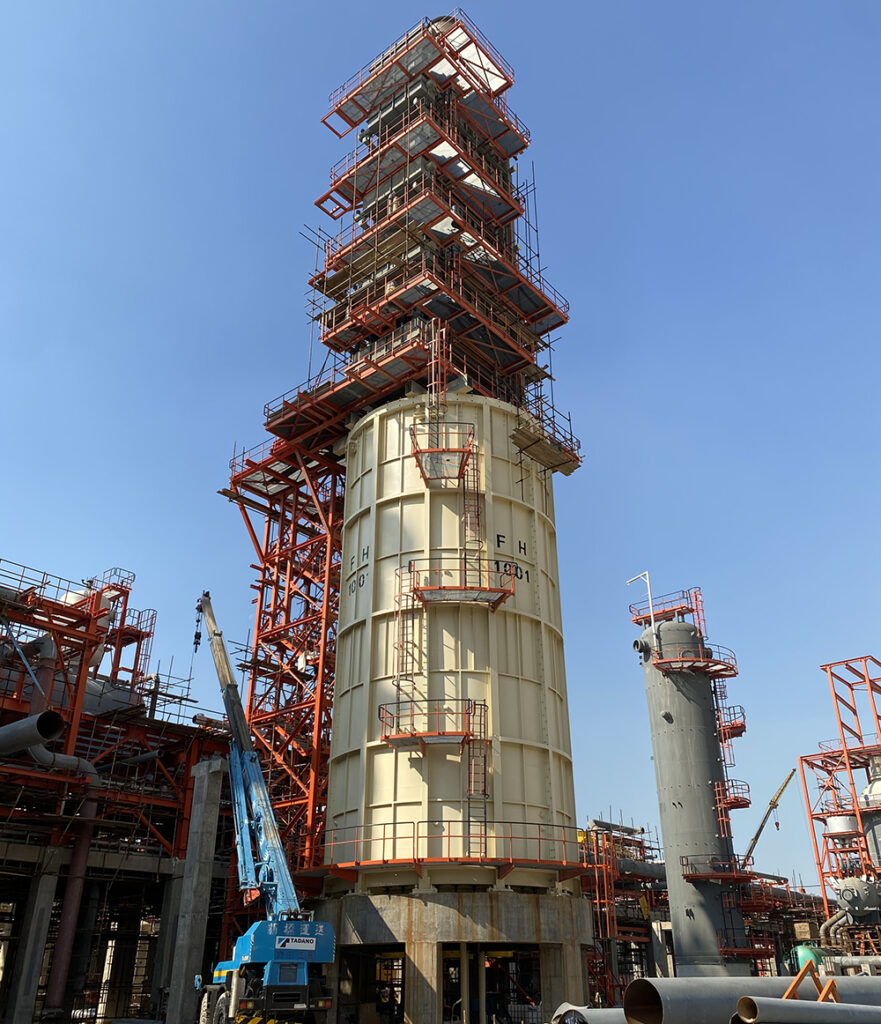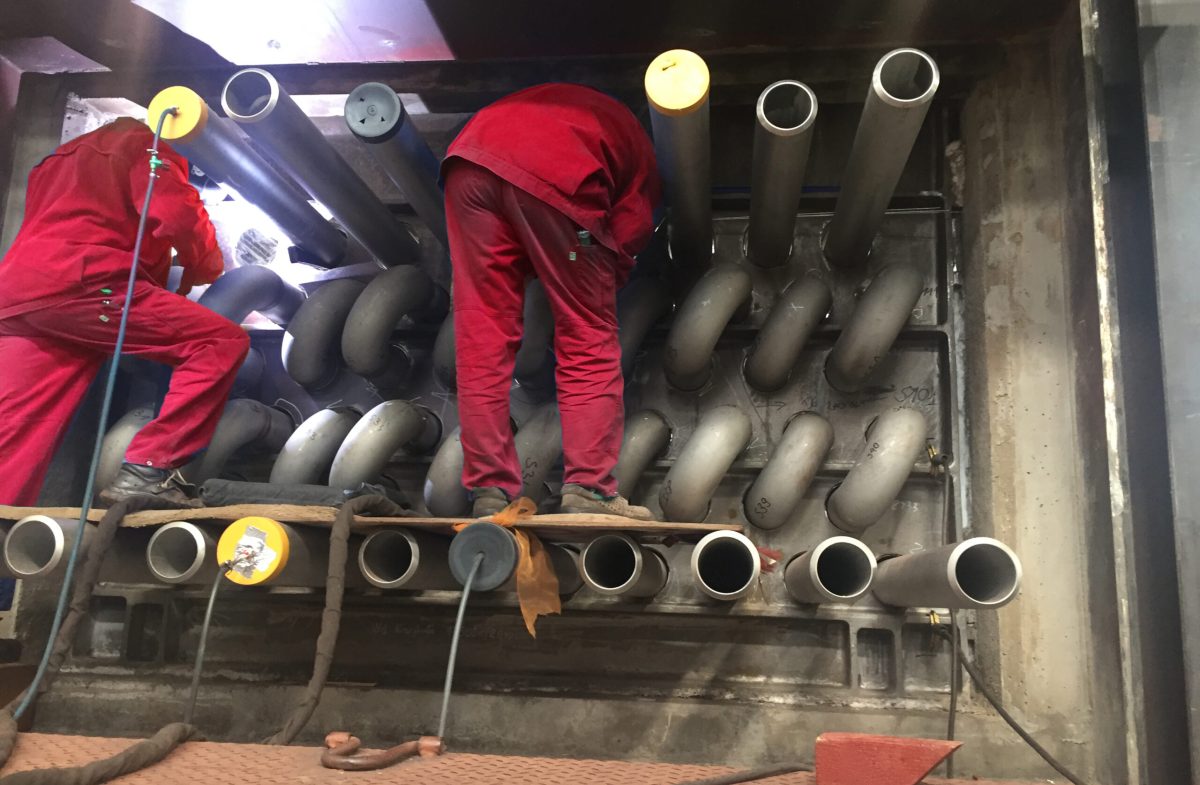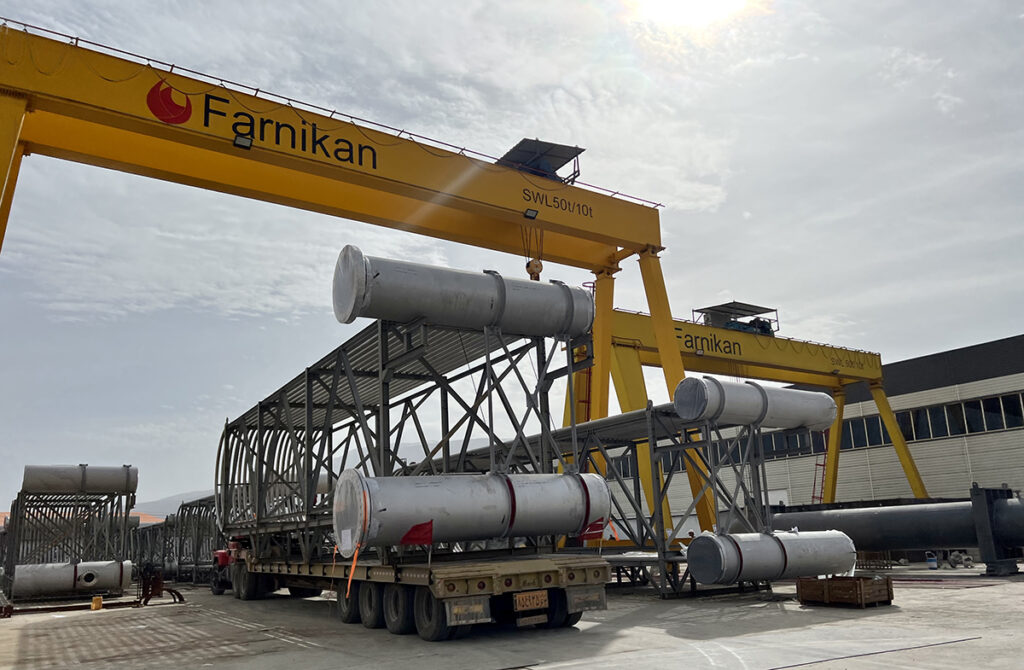Home / Fired Heaters
Heaters and Reformers
Applications for Direct Fired Heaters:
- Regeneration Gas Heating
- Process Air Heating
- Viscosity Reduction
- Inline Liquid or Gas Heating
- Thermal Oil Heating
Our Solution
In collaboration with world’s premium Engineering companies of Fired Heaters, and thanks to our state of art facilities and special tools, we can fabricate and supply modules, components and all required items of Direct Fired Heaters for the Oil, Gas and Petrochemical industries.
We do EPC project and deliver the prefabricated units for ease of transportation and erection:
- Radiant Section
- Convection Modules
- ID & FD fans
- Pilot
- Duct
- Damper
- Stack
- Refractory
- Interconnecting Piping
- Louvers /Air registers
- Fule system
Our qualified resources in Fired Heater market have comprehensive understanding of design, fabrication, delivery and erection, which results in heaters being supplied in pre-fabricated forms optimizing the overall erection program.


Module Fabrication
Our team of engineers and fabrication follow the fabrication activities according to detailed drawings and fabrication procedures.

Final Assembly
All items will be fabricated as modules which are suitable for transportation and ease of installation in the client’s site.

Process Heaters
There are some applications:
- Start-Up Heater; Starts-up a process unit where it is required to heat up a fluidized bed of catalyst before adding the charge.
- Fired Reboiler; Provides heat input to a distillation column by heating the column bottoms and vaporizing a portion of it. Used where heat requirement is greater than can be obtained from steam.
- Cracking Furnace; Converts larger molecules into smaller molecules, usually with a catalyst (pyrolysis furnace).
- Process Heater; Brings feed to the required temperature for the next reaction stage.
- Process Heater Vaporizer; Used to heat and partially vaporize a charge prior to distillation.
- Crude Oil Heater; Heats crude oil prior to distillation.
- Reformer Furnace; Chemical conversion by adding steam and feed with catalyst.

Application of Fire Heaters
Fired heaters find wide applications throughout chemical industries like refineries, petrochemical and chemical industries, gas processing units, ammonia plants, olefin plants, fertilizer plants, etc. They are termed Feed Preheaters, Cracking Furnaces, Fractionators heaters, Steam reforming heaters, Crude Heaters, etc.
Fired Heaters for Petrochemicals:
- Steam Methane Reformers
- Start-up Heaters
- Hot Oil Heaters
- Steam Superheaters
- Steam Cracking furnace

Fired Heaters with Different Coil Arrangements
Depending on the arrangement of tube banks and combustion chambers there are several types of fired heaters that are used in industries. Some of the common types of fired heaters are
- Type A-Box heater with arbor coil
- Type D-Box heater with vertical tube coil
- Type E-Cylindrical heater with vertical coil
- Type F-Box heater with horizontal tube coil

Radiant Coil
Fired Heater
How does a Fired Heater work?
Fire heater works by direct heat transfer from the product of the combustion of fuels. The maximum flame temperature of hydrocarbon burned with stoichiometric air is about 3500ᵒF (1926ᵒC). Basically, this heat energy is released by combusting fuels into an open space and transferred to the fluids inside tubes which are ranges along the walls and roofs of the combustion chamber. Fired heaters find wide applications throughout chemical industries like refineries, petrochemical and chemical industries, gas processing units, ammonia plants, olefin plants, fertilizer plants, etc. They are termed Feed Preheaters, Cracking Furnaces, Fractionators heaters, Steam reforming heaters, Crude Heaters, etc.
